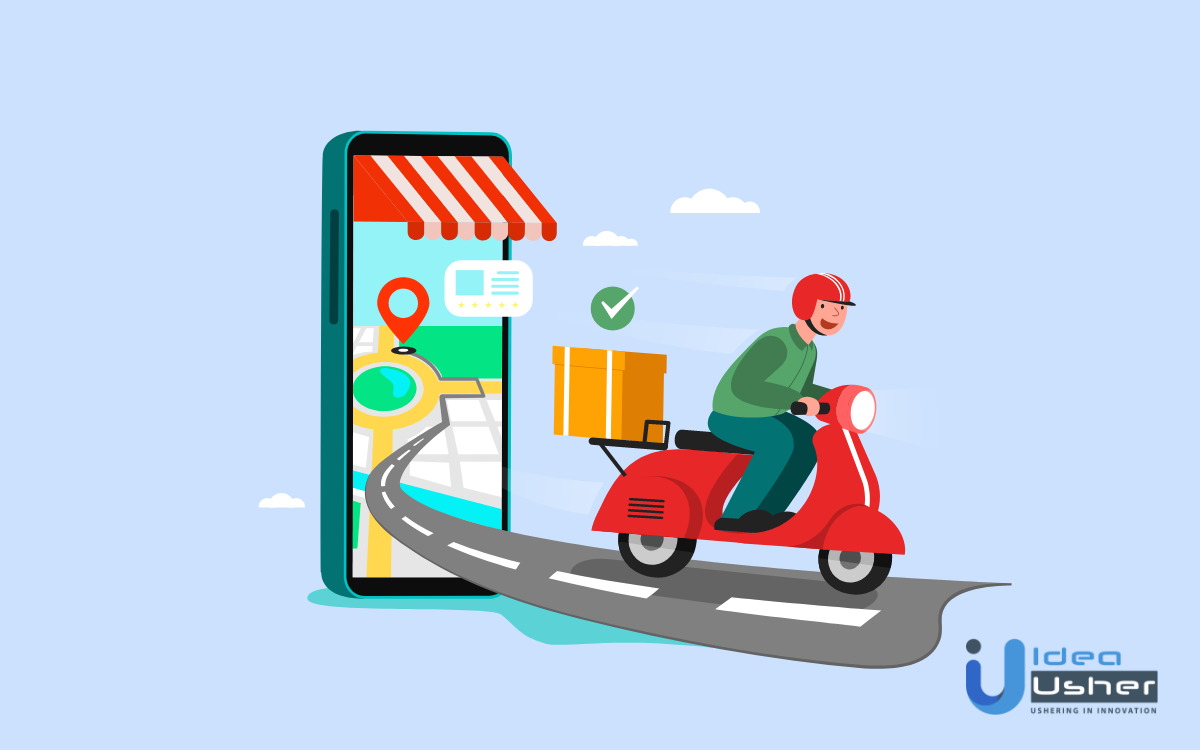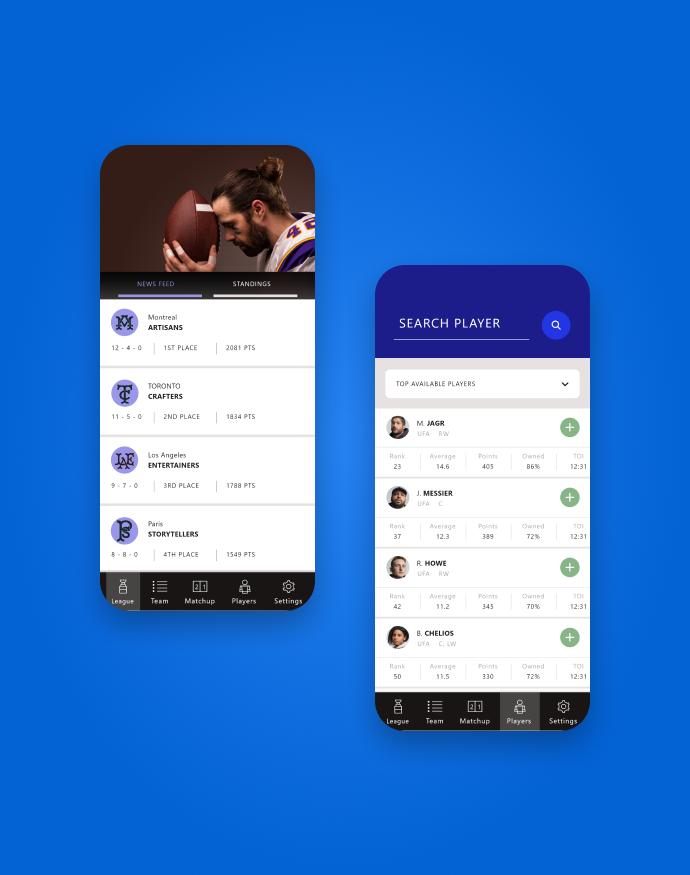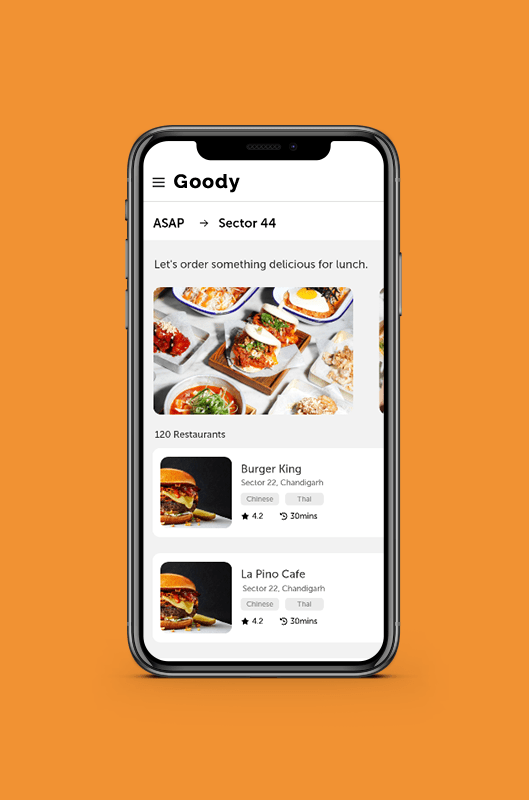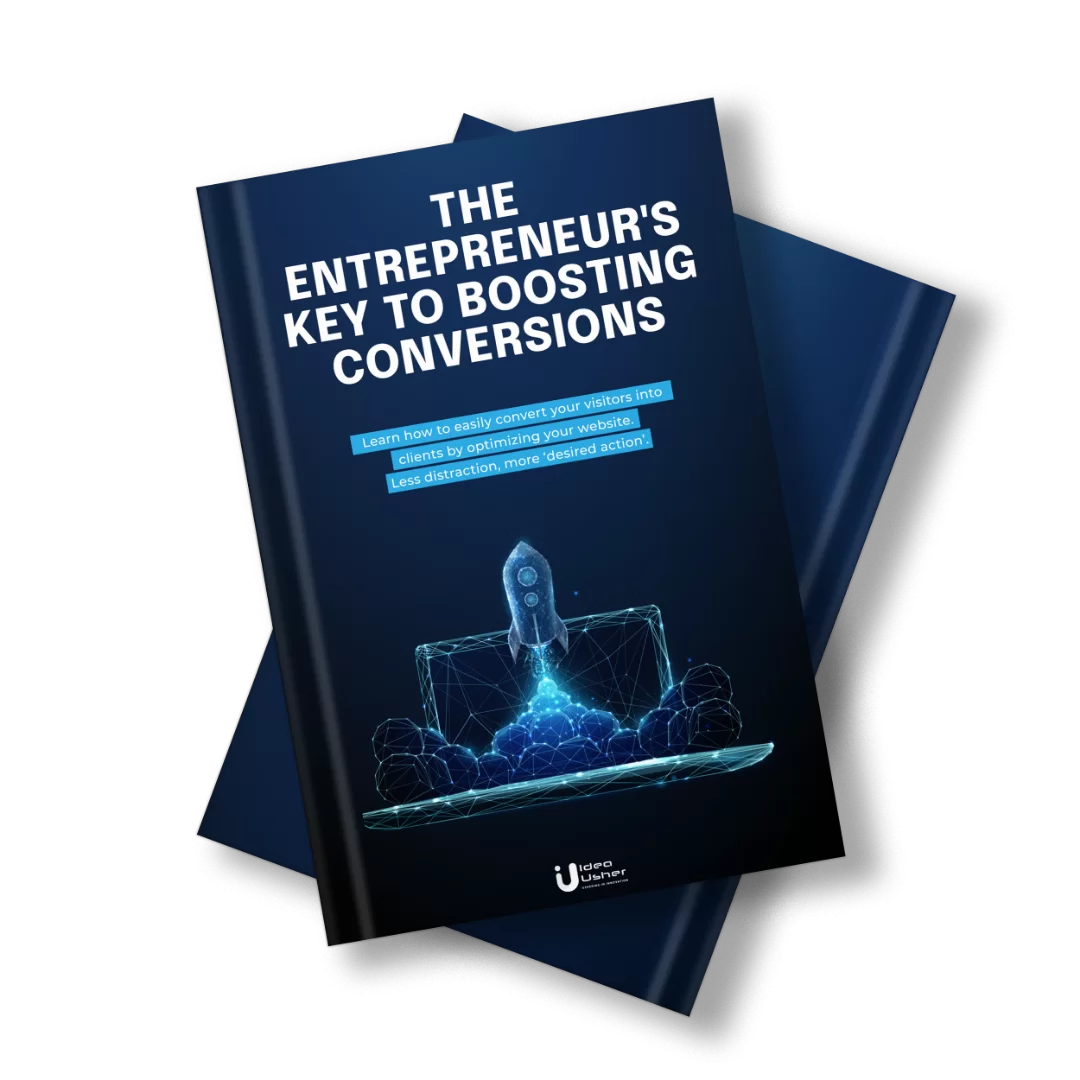
Want to know how Talabat makes money? Go on, have a good read! This blog post will discuss everything you need to know about Talabat – its business model, revenue strategy, app features, and much more!

What is Talabat?
Founded in 2004, Talabat is an on-demand food delivery service that satisfies the hunger cravings of thousands of people across the Middle East. Whether someone needs to order their favorite meal or get some kitchen staples delivered to their home, Talabat is their one-stop solution. Undoubtedly, the company capitalized on the “on-demand” opportunity long before the other start-ups did. Since then, it has only strived to continuously improve its services and adapt to the latest technology.
-
A Short History – How Did Talabat Start and Become Successful?
Before we understand how Talabat makes money, let’s cover its brief history. The company’s journey began when a group of like-minded entrepreneurs joined hands to revolutionize the food delivery experience for both customers and restaurants. Back in 2004, things weren’t as convenient as having everything at our fingertips. Customers had to use their slow and almost non-existent internet connection to order food from their platform.
Soon after Talabat received the order, they used to disconnect from the internet, give a phone call to the restaurant, place their order, and then reconnect. Sounds challenging, right? Well, there’s more. They had to go through the horror of finding the customer’s home address without Google Maps or Waze.
Fast forward to today, Talabat is one of the most technologically advanced and loved food delivery services across MENA (the Middle East and North Africa). Moreover, they ditched their practice of sticking merely to food delivery. They opened gates to new opportunities by venturing into groceries, pharmaceuticals, and flower delivery.
Oh, and they didn’t stop there. They strived hard to expand and successfully became the largest food delivery and grocery platform in seven different countries, namely Kuwait, United Arab Emirates, Qatar, Egypt, Oman, Bahrain, and Jordan. Thus, from using a modem for the internet to offering a world-class app to its users, Talabat has come a long way.
-
Talabat Overview
|
Company Name |
Talabat |
|
Type of Site |
E-commerce |
|
Founded |
2004 |
|
Founder(s) |
Khaled Alotaibi Abdulaziz Al Loughani |
|
Acquired By |
|
|
Services Offered |
Online Food Ordering Food Delivery |
| Website |
How Talabat Makes Money – Business Model Simplified
Here comes the main deal. Do you think this food delivery company would have been successful had it stuck to a mediocre business model? Well, we doubt that. Every year, thousands of delivery services start-ups try to serve a market and fulfill the unmet needs of their customers. In this case, Talabat offered them convenience right from their fingertips to their doorstep.
However, not every start-up can last in a competitive market, and Uber Eats is the biggest example of that. Uber Eats had to cease its delivery services in Egypt and the United Arab Emirates due to its inability to withstand the competition. Therefore, if you’re looking to start your food delivery app, you should ensure you have a robust business model and a revenue strategy that earns well.
Let’s have a look at how Talabat makes money and what it did differently.
Key resources
- Their large database of restaurants. They presently have more than 10,000 restaurants on the platform.
- The food ordering platform consists of both a website and mobile application.
- Their delivery partners, who work on delivering the customers’ orders within 30 to 60 minutes.
Value proposition
Customers:
- Order food online from their website or app without any hassle.
- Easily pay via the app itself and choose their preferred mode of payment, such as a debit card, credit card, payment wallet, etc.
- They can choose from a wide variety of restaurants and food items.
- In case they wish to see how long it is going to take for their order to reach them, they can track their order and see the Estimated Time of Arrival (ETA).
- Once they receive their order, they can provide feedback and rating to the restaurant and the delivery person.
Restaurant:
- All the restaurants that list themselves on the platform can benefit from an extended customer base.
- By getting an online platform, they open doors to new opportunities by serving new customers across different areas.
- Restaurants get a higher reach and are able to stand out from those who are not listed on the platform.
- The platform also empowers cafe and small restaurant owners.
- Overall, they are able to generate higher revenue.
Delivery Partners:
- People who join as delivery partners can get a great additional source of income.
- They can benefit from the flexible time slot and can work at their own convenience.
- Their pay is not just limited to what the company provides them. Any additional tip that the customers leave is for them to keep.
Want to make a food delivery app like Talabat? Get in touch with us today and build a world-class food delivery app.
Key Activities
- Taking online orders from customers is their main activity.
- They create an extensive database of the customers and restaurants and work on managing them.
- Hiring delivery persons who can work on delivering the customers’ food orders.
- They collect and store all the listed restaurants’ information.
- They manage logistics to process orders and transactions.
Customer Relationships
- They offer a reliable customer support chat in case the customer does not want to have a telephonic conversation with an executive.
- To ensure optimum satisfaction, they offer a 24*7 customer support feature.
Cost Structure
Before we understand how Talabat makes money, let’s understand its cost structure.
- Their major expenditure includes paying salaries to permanent employees.
- The technological setup and running costs of their platform, be it their website or mobile application, also account for a significant portion of their cost structure.
- Other costs include payment to delivery persons and fuel expenditure.
Key Partners
- Restaurants listed on the platform
- Delivery partners
Customer Segments
Users:
- Talabat mainly caters to those who don’t want to cook and want to eat from outside.
- It also acts as the best solution to those people who want food to be delivered to their doorstep.
- People who want to try new cuisine and order from new restaurants on a regular basis can also use this app.
Restaurants:
- Restaurants that don’t have their own delivery partners can benefit from Talabat.
- Local restaurants that don’t have an online presence can use the app.
Channels
- Website
- Mobile app for Android
- Mobile app for iOS
Revenue stream
Commissions, advertising, and delivery charges are how Talabat makes money. Let’s discuss them in detail in the next section.
How Talabat Makes Money – Revenue Model Explained
As you can see, the previous section talks about the company’s value proposition, customer segments, key activities, and much more. Every start-up has its own set of business outlooks.
However, no matter how effectively they plan out and manage everything, if they’re not making profits, they’ll eventually have to shut down their operations.
This is where your revenue strategy comes into play. It needs to be unique, sustainable, and flexible enough to withstand a dynamic business environment. Let’s take a look at how Talabat makes money with commissions, advertisements, and delivery charges, and give you the revenue model inspiration you’re looking for.
Also check out the revenue models of: Uber | Instacart | Zoom
-
How Talabat Makes Money With Commissions
This is the most common revenue strategy for food delivery companies. When customers place an order via their app from a particular restaurant, the company takes a cut from the total bill amount. In the case of Talabat, the company takes 15 to 25% of the restaurant’s bill. It also has a feature called Talabat Exclusive, where it receives 5 to 10% on the restaurant’s order list. The commission percentages depend on various factors, such as restaurant location, order frequency, and so on.
-
How Talabat Makes Money With Advertisements
Advertising is another great strategy to earn revenue. Restaurants that wish to get higher visibility on the platform can opt for the advertisement feature. As a result, all the customers who are using the app to order food will be able to see the advertised restaurant highlighted on the application.
The two ways in which Talabat generates revenue through advertisement are banner ads and priority listings. When the restaurant opts for banner ads, a personalized banner is displayed on their web and application platform which increases their visibility. Thus, as soon as the customers open the app, they’ll be able to see the featured restaurant’s banner on the homepage.
The other way, which is the priority listing, is the option of advertising your restaurant by putting it on the top of the restaurant list. In this way, as soon as the customer opens the restaurant listings, they will be able to see the selected restaurant in the first three to five options. Again, this promotes a higher reach as the customers are more likely to select the restaurant they see first.
-
How Talabat Makes Money With Delivery Charges
Just like any other on-demand delivery service, Talabat charges a delivery fee from its users. Although there is no requirement for a minimum order, the company charges a fee for delivering your order to your doorstep that gets added to your billing amount. This delivery fee can get higher if your order value is low. Apart from this, the standard delivery can get higher depending on factors such as high demand and external conditions such as rain, traffic, etc.
Talabat App’s Core Features
There are three variants of the Talabat food delivery app, namely: User App, Delivery Partner app, and Admin Panel. Each version has its own set of features. We will now discuss each version’s basic features to give you an idea of how food delivery apps work.
User App
The user application variant has the following features:
-
Registration and Log-in:
There is an option of registration via linking email or contact number. The user can log-in with the same credentials whenever they use the app next time.
-
Restaurant Listings:
A comprehensive list of restaurants and meals is available to the customers on Talabat. They can choose their preferred option accordingly.
-
Checkout and Payment:
The application has an easy check-out process. It includes multiple payment options such as Debit Card, Credit Card, Net Banking, E-wallets, and COD.
-
Order Tracking:
Customers are able to track their orders to have a clear idea about where their product is and how much time it will take to reach them.
-
Order History:
Customers are able to access their order history and other information such as product invoices and details. They can also re-order their previously ordered products.
-
Feedback and Rating:
The customers can give feedback to the restaurant and delivery partner depending on their satisfaction levels. This helps Talabat to improve its services and cater to its customers more efficiently.
Want to make a food delivery app like Talabat? Get in touch with us today and build a world-class food delivery app.
Delivery Partner App
The delivery partner application variant has the following features:
-
Profile:
This feature allows the delivery partner to add their details such as name, address, phone number, and relevant identification proof.
-
GPS Tracking and Status of Delivery:
The navigation feature allows the driver to reach the customer’s exact location. He can also change the status of delivery to En route, Arrived, Delivered, etc.
-
Order History:
The driver can access the order history, including the delivered, not delivered, and canceled orders via this feature.
-
Total Earnings:
This feature allows the drivers to track down their daily, weekly, and monthly earnings.
Admin Panel
The admin panel has the following features:
-
Dashboard
This feature allows the admin to manage and supervise the delivery partners and customers.
-
Managing Delivery Agents
Admins can access each delivery agent’s profile via this feature. They can access all the information related to their total earnings, penalties, incentives, and ratings.
-
Managing Customers
Admins handle all the customer queries and access information such as cancellation fees, discount codes, the total number of orders, etc.
-
Manage pricing and commissions
They manage all the prices mentioned in the application, look after the commissions, and make changes accordingly if required.
FAQs – Build An App Like Talabat
As we’ve covered the business model and discussed how Talabat makes money, let’s answer some commonly asked questions.
-
Cost To Make An App Like Talabat
The cost to build an application like Talabat would vary depending on the developer, the platform, features, and the payment contract you choose. For instance, your price can differ if you opt for a native app over a hybrid app. Further, you’ll need to decide whether you want to go for fixed or hourly app development.
Finally, a major deciding factor for the overall cost would be the features you want to include in the app. A rough estimation for a basic food delivery app would range from $10,000 to $20,000 and can go up to $50,000 in the case of a complex and advanced app.
-
Time Taken To Make An App Like Talabat
The front-end and back-end development can take a lot of time and varies from project to project. Moreover, each feature takes a set amount of time to be integrated into your app. For instance, the UI/UX design may take up to anywhere between 40 to 60 hours to be incorporated. Similarly, MVP testing and bug-fixing can take up to 40 and 60 hours respectively. Thus, it depends on the features you want your app to have.
-
How should I get started with my food delivery app?
We would suggest that you should first study the industry giants in the food delivery space to get an idea of their work. However, as now you already know how Talabat makes money, you can proceed with making a similar app. Once you’re ready with your plan, you should look for a team of the right developers and elaborate your idea to seek a feasible solution.
Choose Idea Usher
Idea Usher has built over 1000+ successful projects. As each customer is different, we strive to offer solutions that are as unique as them and their ideas. Get in touch with us today and build a world-class food delivery app to be the next market leader, Talabat, or simply you.
Don’t forget to check out our portfolio of mobile applications.









Khushboo Rajpal